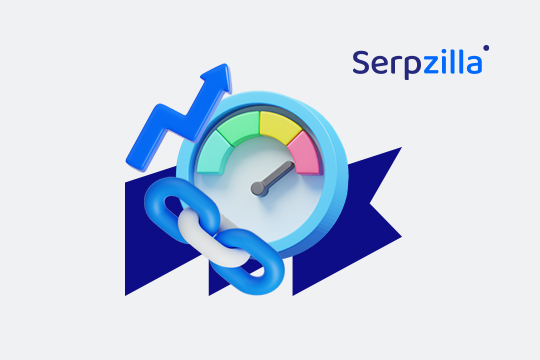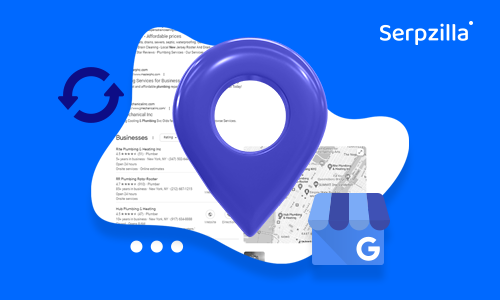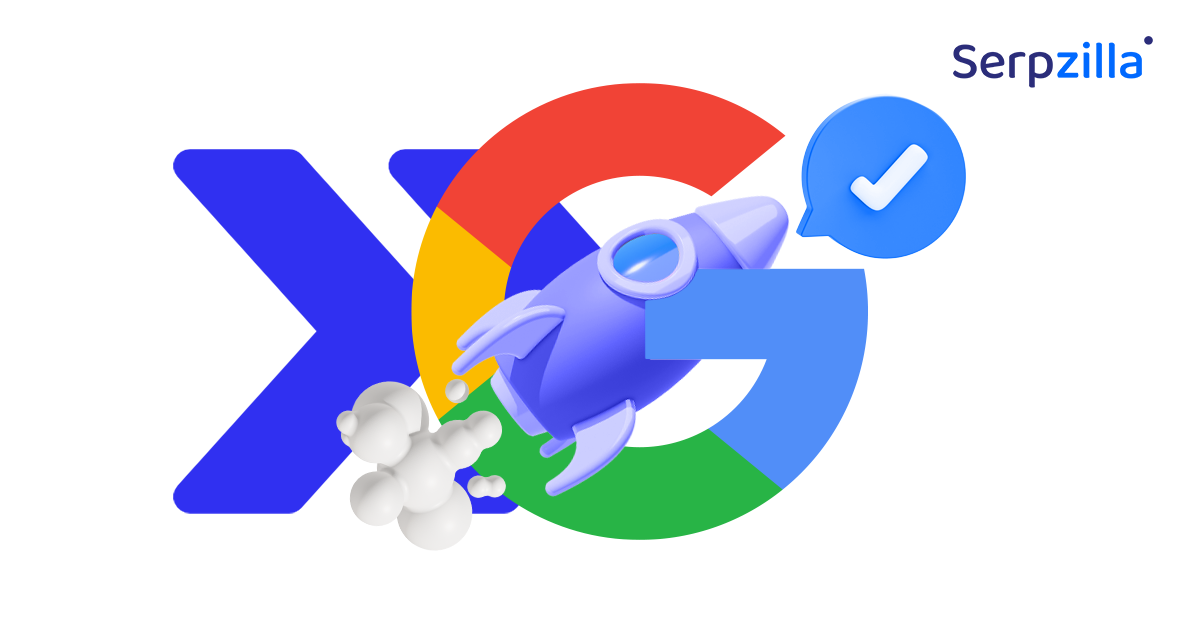Let me be honest, no matter how I flex my link-building campaigns and success stories, I accept that building high-quality backlinks is hard. It takes time, effort, and often a lot of awkward cold emails.
But here’s a thing I have always envied: Why do some websites not build links at all and still have a large number of high-quality links?
Sounds unfair, right?
They attract them naturally, passively, and for free. No outreach, no begging, yet they keep getting hundreds, even thousands, of backlinks on autopilot.
So, what’s their secret? It’s not luck. It’s not even their size. Then what is it? I have explored this for years, and in this article, I’ll break it down for you.
You’ll learn:
- Why do they attract links without even trying
- What types of content and assets get the most links
- And how you can apply the same strategies even if your site is small
I’ll take you through 13 real-world examples of websites that are crushing it. And more importantly, I’ll pull out the lessons you can use.
Let’s begin.
Why These Backlinks Matter (and Why They’re Not “Built”)
In the early days of SEO, link building was all about volume. The more backlinks you had, the better your rankings. People used to buy links in bulk, exchange them, or place them wherever they could, forums, directories, you name it.
But times have changed.
Google’s algorithm has become much smarter. Natural backlinks, the kind that come without you asking, are far more powerful than ones you “build” manually. That’s because they’re earned based on merit, not manipulation. When someone links to you organically, it’s a sign that your content was genuinely valuable. And that’s exactly what Google wants to reward.
These links are also more resilient. They’re less likely to be flagged, removed, or hit by an algorithm update. Over time, they become the foundation of strong domain authority.
Plus, natural backlinks often come from high-quality sources: authority blogs, media sites, universities, research pages, places where spammy outreach doesn’t work. So, when we talk about backlinks “on autopilot,” we’re really talking about playing a different game. One that’s less about chasing links and more about creating something that attracts them naturally.
While this article focuses on earning backlinks naturally, it’s worth noting that strategic, editorial-style paid links, when placed thoughtfully on high-quality domains, can also complement your link profile. Both natural and paid links go hand-in-hand.
Let’s see what that looks like in practice.
Common Traits of Websites That Attract Natural Backlinks
It’s important to look at what these high-authority websites have in common. Because once you understand the pattern, you can start applying the same principles to your own content.
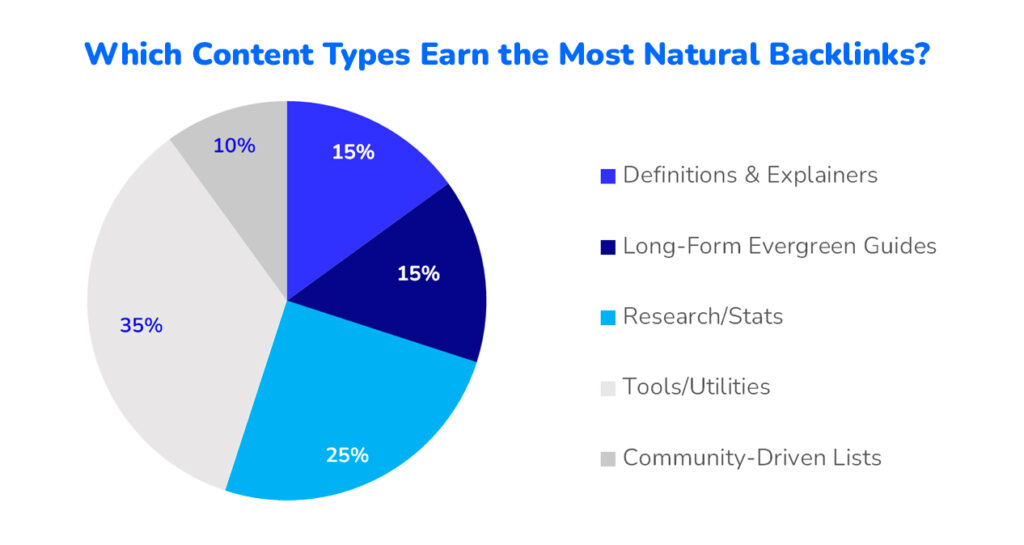
They Rank for Stats, Data, or Research
These websites create content that’s actually useful, not just for readers, but for other content creators, even for their competitors. They don’t just write articles to rank. They research and publish things people want to reference and cite. Like stats, surveys, frameworks, or original insights from their own experiments.
These are the kinds of pages that naturally earn links over time.
They Build Tools, Templates, or Visuals
These websites offer something others can’t easily replicate. It might be a tool, a unique visual, a solution to a problem, a dataset, or even just a unique way of explaining something. When your content becomes a resource, not just an opinion, people return to it and share it.
They Build Evergreen Valuable Content
Viral trends fade, but timeless guides, templates, or data keep getting links for years. Just minor updates in your content, and you are still relevant. They become one of the best link-earning pages. They’re just incredibly helpful, clear, and well-structured.
They Show Authority And Credibility
If your content has no face, no byline, no proof of trust, it won’t often attract links, no matter how useful it is. You have to take the responsibility and consistently show up with value and resources to position yourself as an authority over time. Using the EEAT foundation and leveraging social media can help you get there, faster.
So the bottom line here is, Natural backlinks don’t ‘happen’ by accident. They are a byproduct of a designed content strategy behind them that’s worth linking to.
13 Real-World Examples of How Big Websites Attract Free, High-Quality Backlinks
Now let me break down for you what big players are doing right, and what you can learn from them to replicate similar results on your own site.
1. Ahrefs – Best Paid SEO Tool + Free Tools
Ahrefs built a state-of-the-art premium SEO tool that outperforms every other tool in the industry with its near-accurate stats and databases. And they also gave away useful free tools like their Backlink Checker and Website Authority Checker, and dozens of others. And as a result, they earn hundreds or maybe even thousands of links every day from blogs, YouTube videos, social media mentions, and SEO forums.
Even the screenshots you will find below are intentionally taken using Ahrefs’ free Backlink Checker Tool to support the claim that how a useful tool gets naturally mentioned. And the numbers speak for themselves too, 6.7 MILLION backlinks!!!
2. HubSpot – Best Marketing Reports & Guides
HubSpot releases data-packed industry reports every year. Gets cited across thousands of blogs, marketing sites, and even by news publications. And besides, they have one of the best, or just THE BEST, comprehensive marketing guides out there available for free. And the value they offer is often more than paid courses.
Why it works: Data = authority. Everyone needs a stat to back their content. HubSpot becomes the source.
3. Wikipedia – Trusted Source for Everything
Crowdsourced, well-moderated, citation-heavy content on almost every topic. Content creators use it for basic definitions and references for almost any topic, resulting in over 76+ million backlinks according to Ahrefs’ backlink checker. WOAH!!
4. Backlinko – Long-Form, Data-Driven SEO Content
Brian Dean didn’t publish daily. He published better. His long-form content, detailed case studies, and original data reports became a goldmine for SEOs, bloggers, and even marketing publications to link back to.
Posts like “Google Ranking Factors” and “YouTube SEO” earned thousands of backlinks organically because they were the most comprehensive content available on the topic.
5. Statista
Need a graph for “Global Smartphone Usage in 2024”? It’s already there.
Want to know “Fastest growing retail e-commerce countries in 2024”? They have it.
Statista collects and presents hard-to-find stats in clean, visual formats. Because of this, thousands of blogs, researchers, and even journalists embed their graphs and link back.
Why it works: Stats + visuals = instant link bait. Especially when the source is credible and saves time.
6. Canva
From resume templates to social media post designs, landing page templates, infographics, and logos, Canva gives people exactly what they need – FOR FREE. Bloggers writing about design tools, students doing resumes, or YouTubers sharing free resources, all point to Canva.
7. NerdWallet
NerdWallet ranks for super-competitive finance terms, but what’s interesting is how they do it. Their pages comparing credit cards, loans, or banks are structured like helpful tools, not just blog content. Finance blogs, forums, and review websites often link to these as “trusted sources” or “reference pages.” So the point is that with clarity + credibility + real-time data, you attract authority links, even from your competitors.
8. Healthline
Healthline produces medical content that’s reviewed by professionals and structured for SEO. Therefore, health bloggers and media publishers love them. And so does Google. They attract high-value backlinks from universities, government websites, and top-tier blogs.
In YMYL niches (Your Money Your Life), trust and credibility win. Healthline nails it perfectly.
9. Stack Overflow
Every developer, at some point, lands on Stack Overflow. It’s the largest Q&A hub for developers, powered entirely by community contributions. And when devs or tech bloggers need to explain a fix or a snippet, they almost always link back to Stack Overflow.
10. Google Trends
You’ve probably seen it in blog intros: “According to Google Trends…” because this Google’s free tool lets users see what the world is searching for in real time, directly from the first-hand source. So, journalists, bloggers, marketers, this tool is everyone’s go-to source. And it gets links to it when talking about current trends.
11. Unsplash
Unsplash lets anyone use beautiful stock photos for free, with optional attribution. Millions of websites use their photos, and many of them give proper credit, resulting in a crazy backlink profile. Even if attribution isn’t required, many still do it because… well, it’s free value. You just look at the numbers below, they speak. THEY DO!
12. Investopedia
Ever Googled “What is APR?” or “Capital gains tax”? Chances are, Investopedia ranked #1, and hundreds of other sites used it as a reference. They’ve built their own Wikipedia of finance, but with more structure and trust elements.
13. Zippia
Zippia does something clever: they publish state-specific or job-specific ranking articles like “Top 10 Places to Work in Texas” or “Most Stressful Jobs in 2024.” These posts often get picked up by news sites, school websites, and local blogs, and all are happy to link and mention them back.
What We Can Learn from These Examples
After reviewing some of the biggest websites that attract links without lifting a finger, we can easily break down the common patterns behind their success. Because if you look closely, you’ll notice something important: Most of these websites aren’t trying to “get backlinks.” They’re just investing in solving problems better than everyone else.
You’ll notice very few of their links go to regular blog posts. Instead, they go to tools, templates, research reports, definitions, and useful evergreen pages. These are assets, content built to be used, referenced, or embedded. Whether it’s a calculator, a visual chart, or a state-wise ranking, they always offer something others want to include in their own content.
Almost all the examples we discussed are being referenced in other articles. That’s because they include:
- Stats and data
- Simple explanations
- Unique insights or research
- Clear visuals or frameworks
If you create something that helps others prove a point, they’ll link to it without you even asking.
Secondly, they build credibility and trust by default. Look at Healthline, HubSpot, or Investopedia. What do they have in common? Clear structure, expert bylines, review processes, and high editorial quality. And remember, you don’t get thousands of backlinks overnight. Most of these assets have been live for years or decades. But because they solve a problem well, they keep getting discovered, linked, and shared, with just minimal updates in content.
This is the beauty of evergreen content: one great piece can bring in links for years.
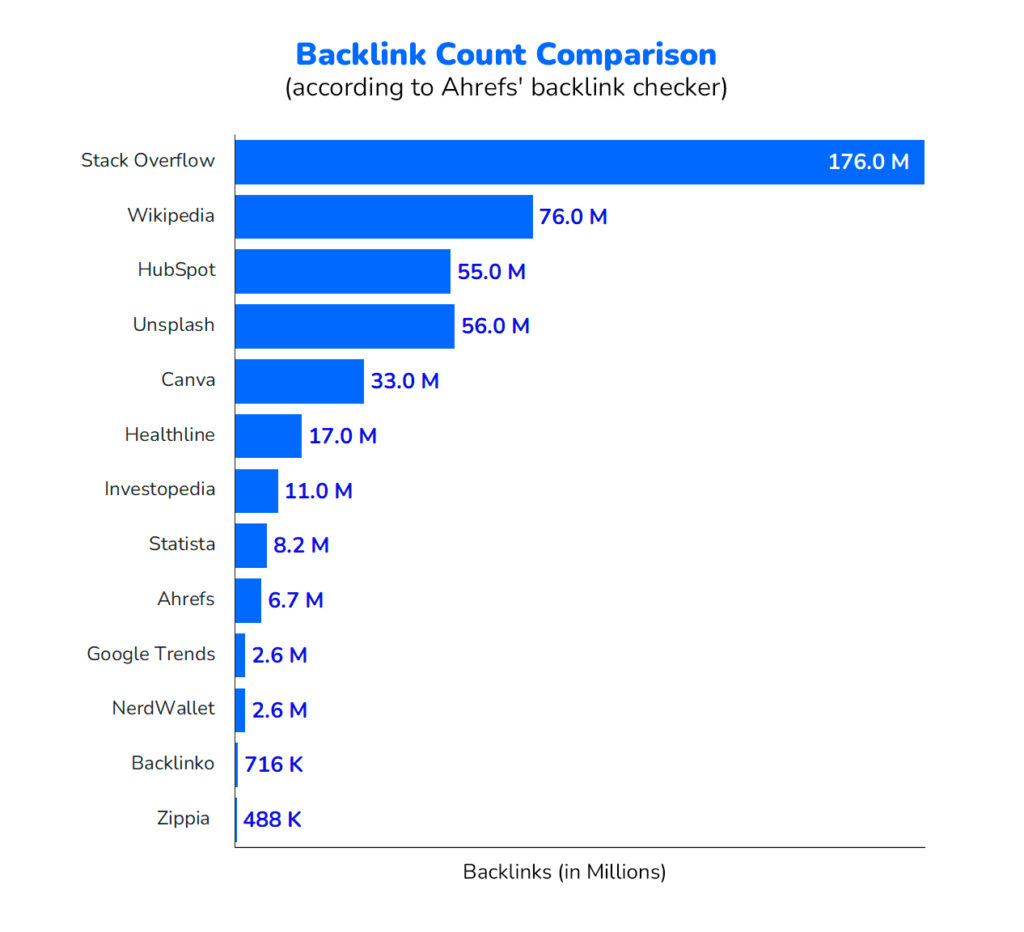
Can Smaller Sites Do the Same? (Yes)
Let’s address the big question, which I expect that you have on your mind right now:
“Okay, these examples are cool… but how do I do this if I’m not HubSpot or Ahrefs?”
The good part is, you absolutely can. You don’t need a big team or a huge domain rating to start. You just need a smart strategy, a long-term focus, and a bit of creative execution.
Here’s how to make your site a link magnet (even if you’re starting from scratch).
Step 1. Create one strong, link-worthy asset
Forget pumping out 100 blog posts. Focus on creating just one piece of content that’s genuinely useful. It could be:
- A free valuable tool
- Well-designed checklist
- Niche-specific data roundup
- A how-to guide with expert visuals
- Ranked list for your industry or location
Start small, but give away undeniable value. Don’t overthink SEO at this stage. Focus on helping someone solve a problem better than what’s already out there. Add so much value that you want to price it a premium, but still keep it free.
As Alex Harmozi says, “If you’re not scared to give it away for free, it’s not that valuable.”
Step 2. Make it visual and easy to embed
If your media looks good and loads fast, people are more likely to link to it. Add:
- Clear charts or tables
- Visual summaries
- A downloadable PDF or Google Sheet
- Embed codes if it’s a widget or graphic
The easier you make it for others to share or reference, the more links you’ll earn.
Step 3. Tie it to the right search intent for SEO
If your content ranks for a keyword that writers or bloggers search for, the backlinks will come naturally. Think:
“[Niche] industry stats 2025”
“Best tools for [X]”
“Checklist for [specific task]”
“Top [something] in [location]”
These keyword patterns also attract linkers, not just readers.
Step 4. Share it where your audience (and linkers) hang out
Now this is where the game changes for small websites and bloggers.
Join Facebook groups, subreddits, forums, Slack communities, or anywhere your niche lives. Don’t spam. Just be helpful, share your asset when it fits the conversation, and people will notice. Your resources/visuals will start getting screenshots, bookmark saves, and ultimately the mentions. Also, use the organic reach of social media platforms like Instagram, TikTok, LinkedIn, Pinterest, etc. to spread the word and become the talk of the town in your niche.
Step 5. Seed Early Backlinks to Accelerate Organic
While earning backlinks naturally is the ideal long-term play, it’s not always easy, especially for new or small websites trying to break through. That’s where platforms like Serpzilla can help. They connect you with thousands of real websites where you can place contextual backlinks in a transparent, strategic way. Used wisely, platforms like Serpzilla can complement your organic efforts and give your best assets the visibility they need to start attracting links on their own.
Step 6. Build on what already works
Look at your Google Search Console or Ahrefs data. Do you already have a blog post that’s getting backlinks? Improve it. Add visuals, a downloadable version, or internal links to related assets. Sometimes the fastest wins come from optimizing what’s already working, not starting from zero.
In short, you simply just pick a problem → Solve it better than anyone else → Then make it easy to find, reference, and share. That’s how you begin.
Final Words
The websites we explored didn’t just go viral. They built link-worthy assets, solved real problems, and positioned themselves as trusted sources for years. And because of that, people linked to them. Willingly. And repeatedly.
And you can do the same.
You don’t need millions of traffic or a big brand name. You just need to focus and invest in creating value that others want to cite. That’s how you build backlinks that compound over time, without cold emails, paid placements, or shady tactics.
And be patient. Give it time. Good content spreads, and links will follow.
(Reach out Ume Laila on LinkedIn to explore how she can help your site earn high-quality backlinks on autopilot)



